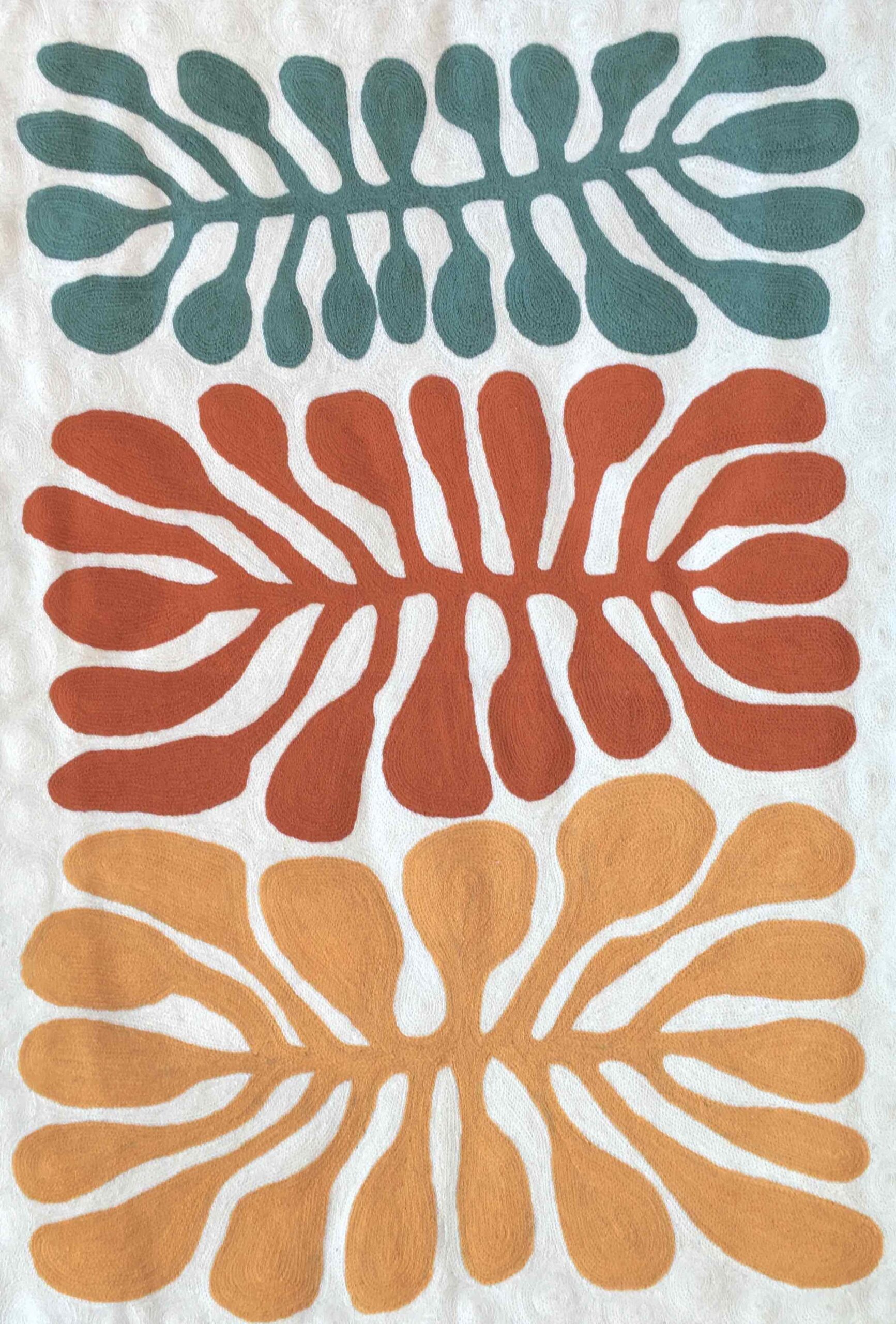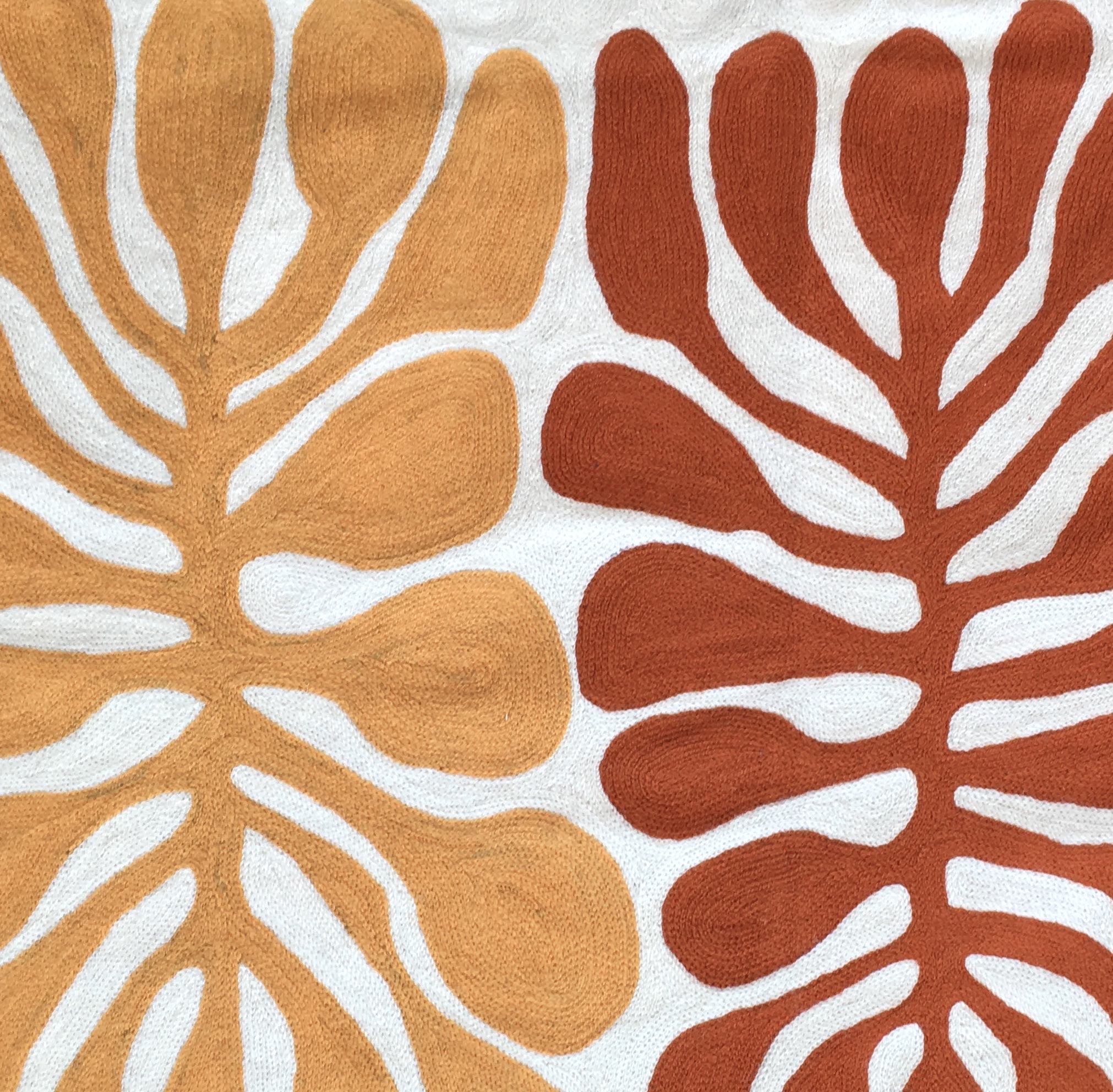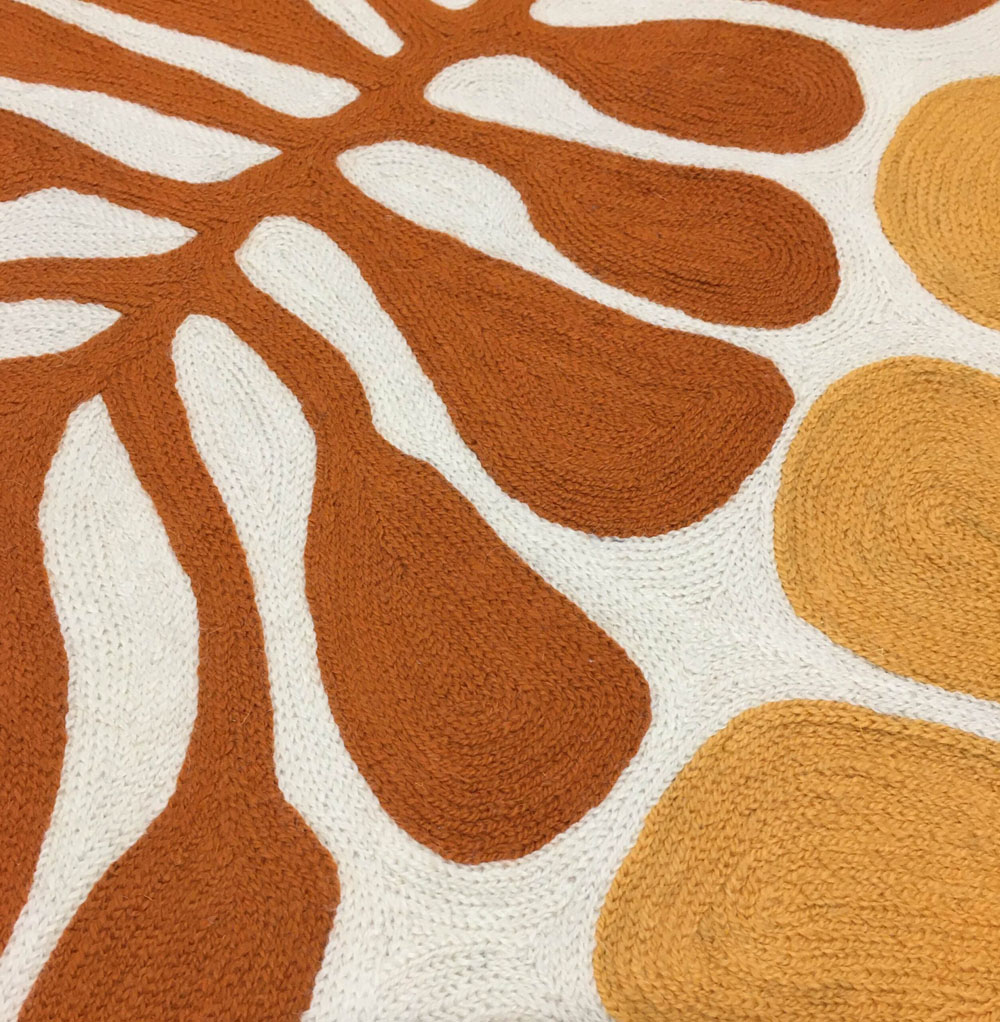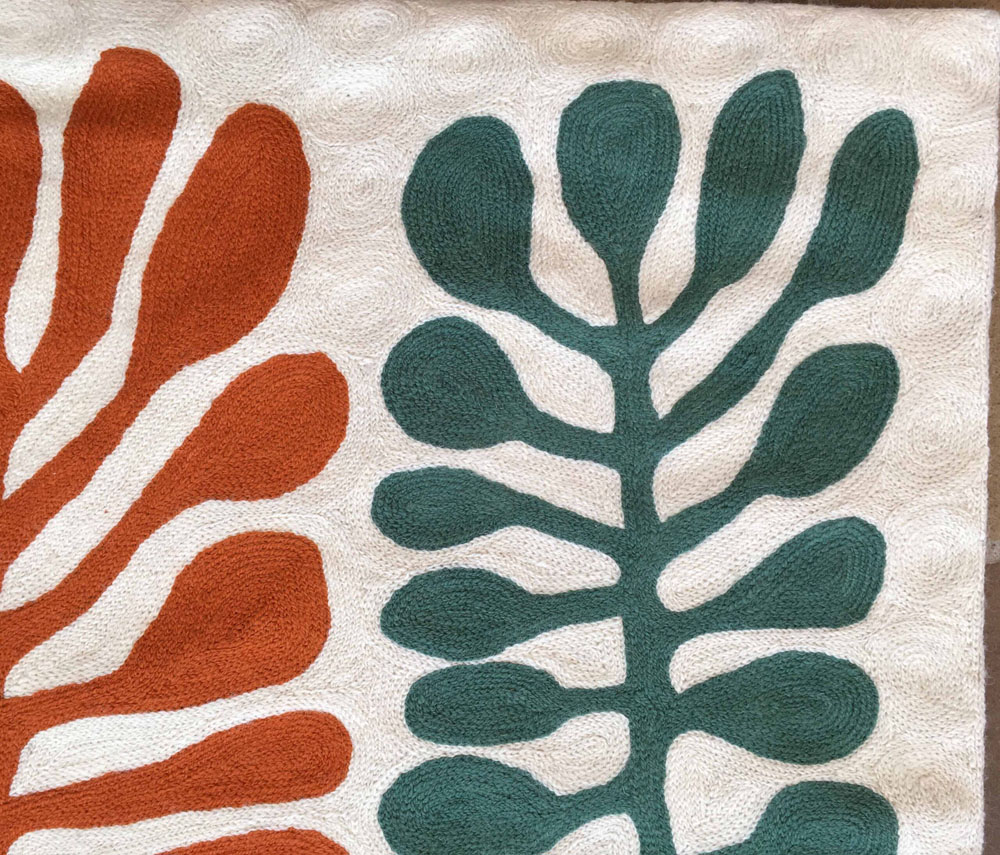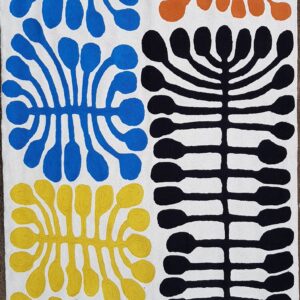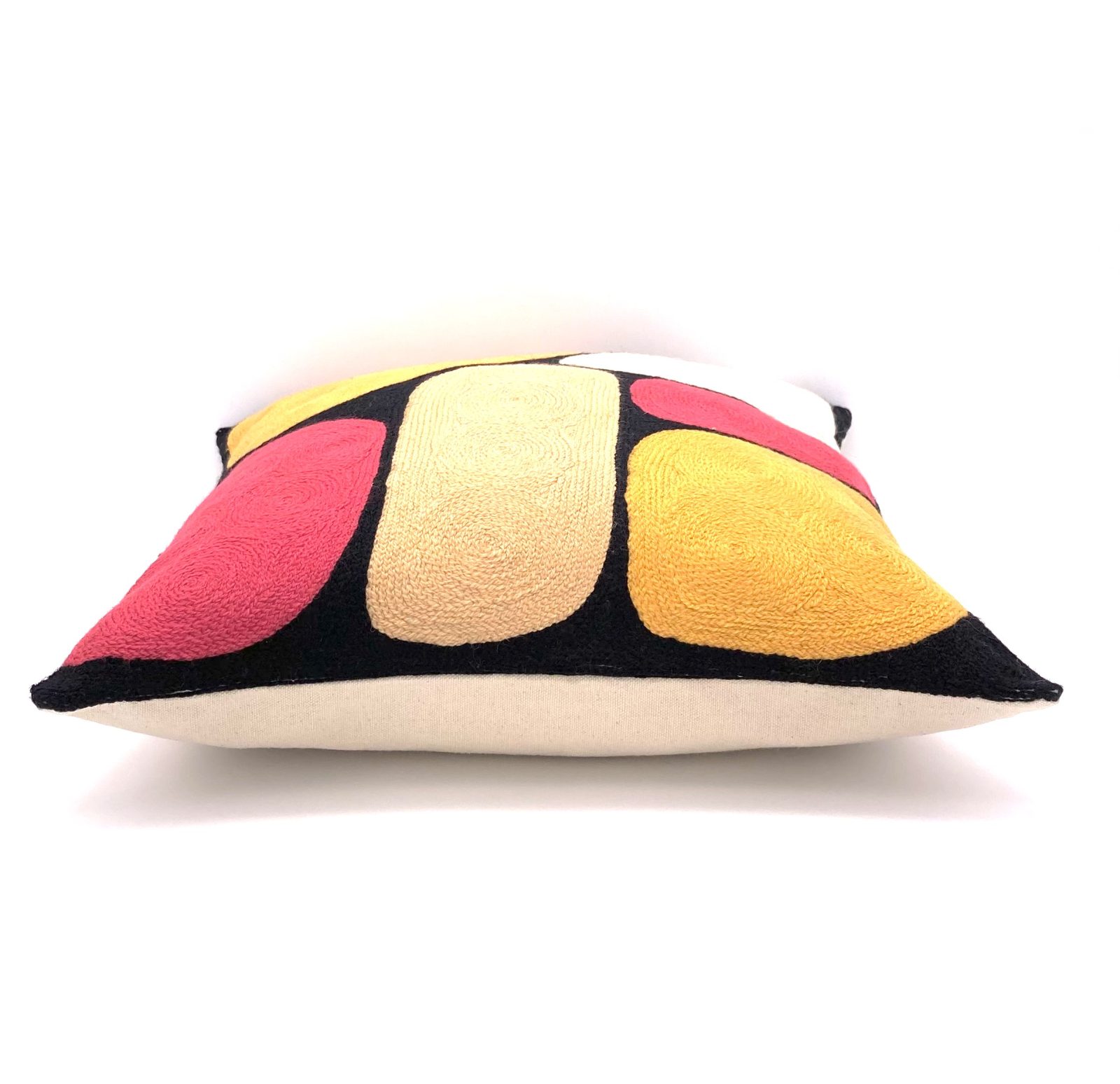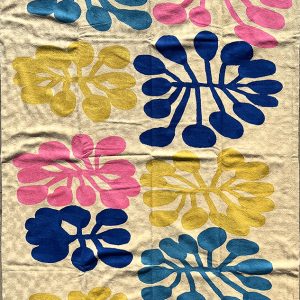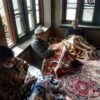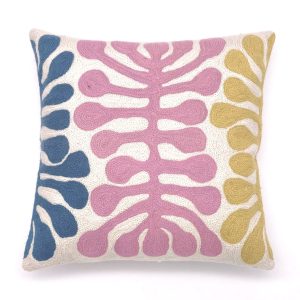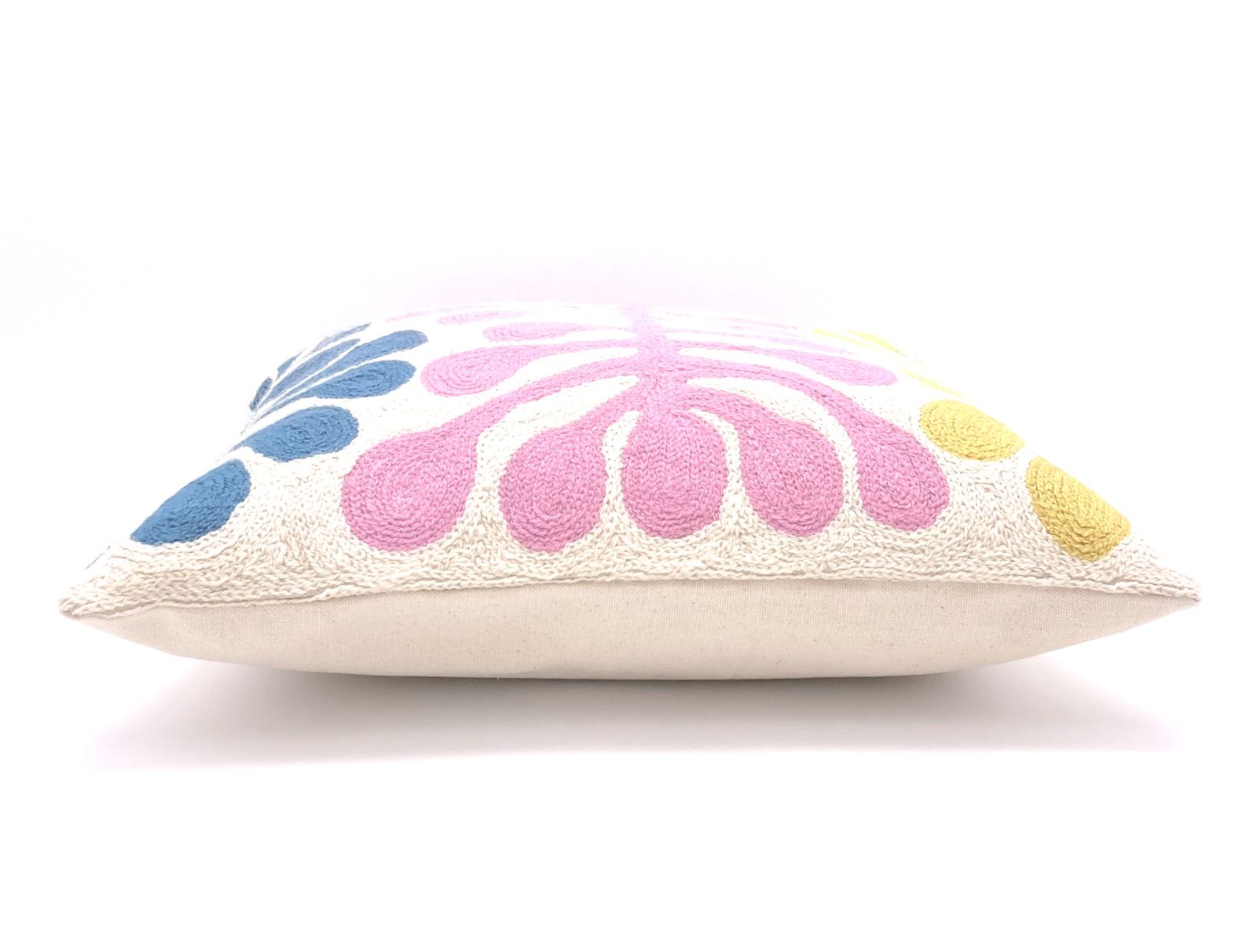Description
Composition: Hand dyed wool and cotton
Size: 61 x 91 cm (24 x 36 inches)
Features:
- Hand embroidered/chain-stitched
- All natural fibres – embroidered wool on cotton canvas
- Fair Trade certified
- Limited edition – individually numbered
- Certificate of Authenticity supplied with each kilim
- Royalties paid to the artist/family on every sale
- Hard wearing
- Back has non-slip surface
- Each kilim has flap on the rear for ease of hanging with dowel/rod
- Matching cushion covers are also available
Chain-stitched kilims are a traditional rug/soft furnishings making technique from Kashmir. As people sat on the floor they were both homewares and decoration. As many artworks are painted on the ground or 3D surfaces/bodies most of the images do not have a set orientation so can also be hung portrait or landscape if preferred.
About the design: Watiya Tjuta (Many Trees)
In this design Mitjili Napurrula depicts her fathers Tjukurrpa, the ceremonial spear straightening in Uwalkari country (Gibson desert region). The Watiya Tjuta (Acacia Trees) are the trees that are used to make these spears. Uwalkari country is abundant with Watiya Tjuta, as well as sand hills and other plants. Mitjili paints the motif of the Watiya Tjuta, carrying on the recurring motif as her mother used to draw in the sand. Her mother passed on this Dreaming to her.
Artist: Mitjili Napurrula
Mitjili Napurrula was born in 1945 at Papunya, 200 kilometres West of Alice Springs. She is the daughter of Tupa Tjakamarra and Tjunkiya Napatljarri. Tjunkayi Napaltjarri was a Pintupi/Luritja woman from Yumari who also became an artist of public repute. Her mother ‘came in’ from the drought-stricken Pintupi/Lurjita country seeking refuge and rations in the remote community of Haasts Bluff (Ikuntji). Along with her extended family, she was settled at Papunya, where Mitjili was born.
Dispossession and drought were only two of the factors that led to a series of migrations from the desert to mission or government settlements in the mid-twentieth century. Following the outstation movement of the late 1970’s and early 1980’s, Aboriginal communities sprang up throughout the region, each home to a distinctive art movement.
Like many of her generation, Mitjili witnessed the genesis of the Papunya Tula art movement and the artistic contribution made by members of her immediate family. Mitjili’s brother, Turkey Tolson Tjupurrula, was one of the founding members of the Papunya Tula Artists cooperative.
Mitjili grew up in Papunya and moved to Haasts Bluff with her late husband Long Tom Tjapanangka in the late 1980’s during the outstation movement. The couple started painting at Ikuntji in 1992 with the opening of Ikuntji Women’s Centre, both contributing significantly to the emerging art movement there. She gained an international following after winning the Alice Springs Art Prize in 1999.
In Mitjili’s winning painting, Untitled (1999), coagulated white pigment eddies around abstract forms that refer to the Watiya Tjuta (desert oak/spearwood trees) used to make kulatas (spears). The tightly structured patterning of the key motifs and bold use of colour demonstrates the artist’s confidence in her individual artistic vision within a family of superlative artists – and the cultural heritage that continues to inform the myriad expressions of Western Desert artists. Mitjili passed away in April 2019.
CARE INSTRUCTIONS:
Do not put place/use in direct sunlight or colors may fade. To clean – dry cleaning recommended. Can be ironed on a wool steam setting.
About the Better World Arts chainstitch kilim products
These beautiful, unique textiles are a cross-cultural collaboration combining Aboriginal designs and traditional Kashmiri rug-making techniques. Chain stitched, using hand dyed wool, each is a completely handmade piece. A more empowering way to work, this brings many direct benefits to the artists’ and their community. Control and ownership of intellectual property are also maintained. Purchase of these products guarantees a direct return to the Aboriginal artist’s family and their community.

